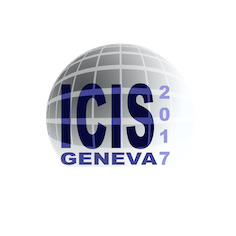Speaker
Description
MEDICIS is a starting facility dedicated to the production at CERN of medical radioisotope batches my electromagnetic mass-separation [1]. Ever more specific and efficient ion sources have been developped along the years across the different operating ISOL radioactive ion beam facilites and projects. Some examples can be found in ref. [2]. During the past few years, new insights were gained in the physical processes driving these delicate devices, very often submitted to harsh chemical, thermal or radiological conditions [3].
The requirements for a dedicated facility like CERN-MEDICIS are different, notably because high efficiencies, moderate chemical selectivity, high reliability with large isotope beam currents is more particularly required. Investigations in some cases have been done to develop specific ion source devices for medical radioisotope electromagnetic mass separation [4]. However the large spectrum of separation conditions require more dedicated developments to reach separation yields that are commensurate with more traditional radiochemistry separation processes used in conventional medical isotope production methods.
In this contribution, we will report on the large spectrum of separation processes intended at CERN-MEDICIS, together with information already available from recent ion source developments at Isolde and at other isotope mass separation facilities. In particular, large separation process yields can already be obtained for medically important radionuclides such as $^{225}$Ra and $^{225}$Fr, generators of one of the few alpha-emitting $^{225}$Ac medical radioisotopes, or for more prospective Hg Auger electron emitting radioisotopes. Developments for the separation of cyclotron-produced $^{149}$Tb, only available up until now at spallation ISOL facilities, is ongoing.
Part of these investigations are done with collaborating institutes of MEDICIS and in the European program MEDICIS-Promed [5].
Acknowledgment
MEDICIS-Promed is funded from the European Union's Horizon 2020 research and innovation programme under grant agreement No. 642889.
References
[1] Dos Santos Augusto, R.M. et. al., Appl. Sci. (2014), 4, 265-281.
[2] Proceedings of the CAS–CERN Accelerator School: Ion Sources,
Senec, Slovakia, 29 May – 8 June 2012, edited by R. Bailey, CERN-2013-007, (CERN, Geneva, 2013), DOI: 10.5170/CERN–2013–007.
[3] Penescu, L. et. al., Rev Sci Instrum. (2014), 81, 02A906; Neidherr, D., et. al., Physical review letters (2009): 102.11 112501 ; Sato, T. K., et. al., Rev Sci Instrum. (2013),84.2, 023304.; Sato, T. K., et. al., Nature (2015) 520.7546: 209-211.
[4] J. D’Auria et. al., Rev Sci Instrum. (2013), 84, 034705 ; http://dx.doi.org/10.1063/1.4797459
[5] www.cern.ch/medicis-promed, June 2017; www.medicis.cern, under development.
